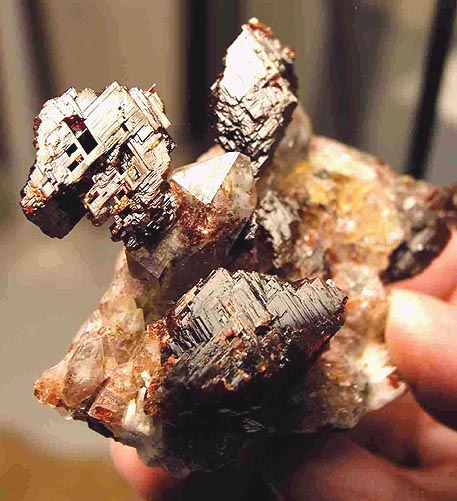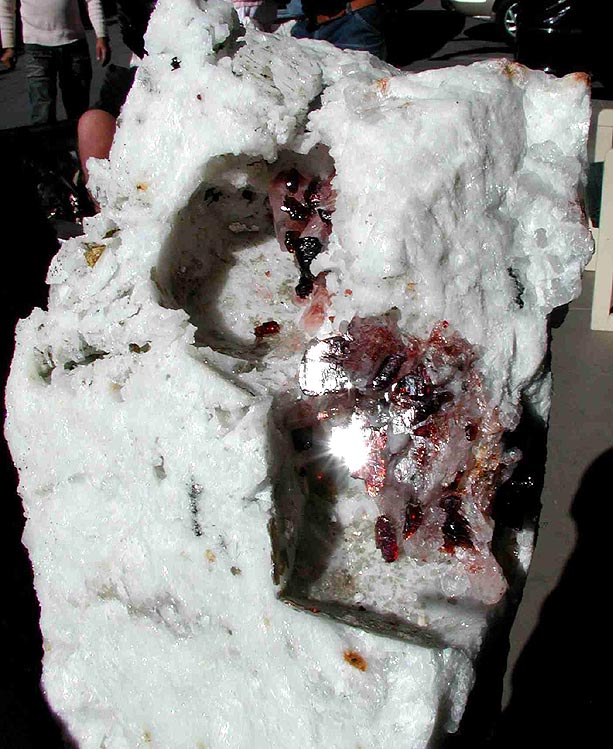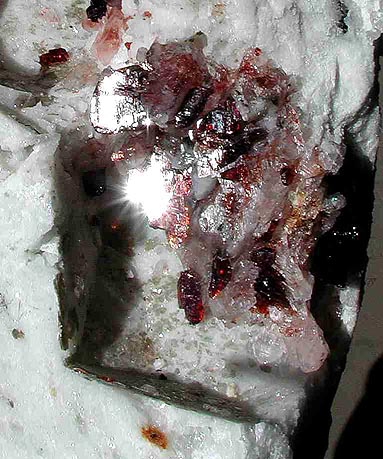| David London School of Geology & Geophysics University of Oklahoma Norman, OK 73019 dlondon@ou.edu |
||||||
The question of an origin by growth or etching has, I believe, been solved beyond any reasonable doubt (a rare event in pegmatite research) based on specimens presently available for sale at the 2004 Tucson gem & mineral show. When the motel trade opened, Lucio Alvarez (Lucio Alvarez Minerals) offered a specimen of spessartine and quartz on matrix (Fig. 15). What struck me, and is visible in Fig. 15, is that the isolated garnet crystal masses possess a common crystallographic orientation (evidenced by reflections from their parallel surfaces). Even so, when I described this specimen to John White in Tucson, he observed that the garnets might have grown in crystallographic continuity, much as quartz does in graphic granite. Good point, though unlike quartz rods in graphic granite, the garnet crystals in this sample, as in all other samples containing lesser quantities or garnet, are isolated from one another. The definitive evidence came from large specimens shown by "Baiano" C.M. Coeho (Cristalina Ltda). These specimens consist of massive white albite with the typically reticulate spessartine masses and euhedral quartz crystals in cavities. Where etching of the albite was negligible, however, the cavities possess the sharp forms of dodecahedrons. Figures 16 and 17 show two such molds in one sample. The dodecahedral cavities contain isolated etched fragments of garnet, all in the same crystallographic orientation, plus euhedral quartz crystals, evidently a product of the garnet dissolution. Case closed. FIGURES
|


